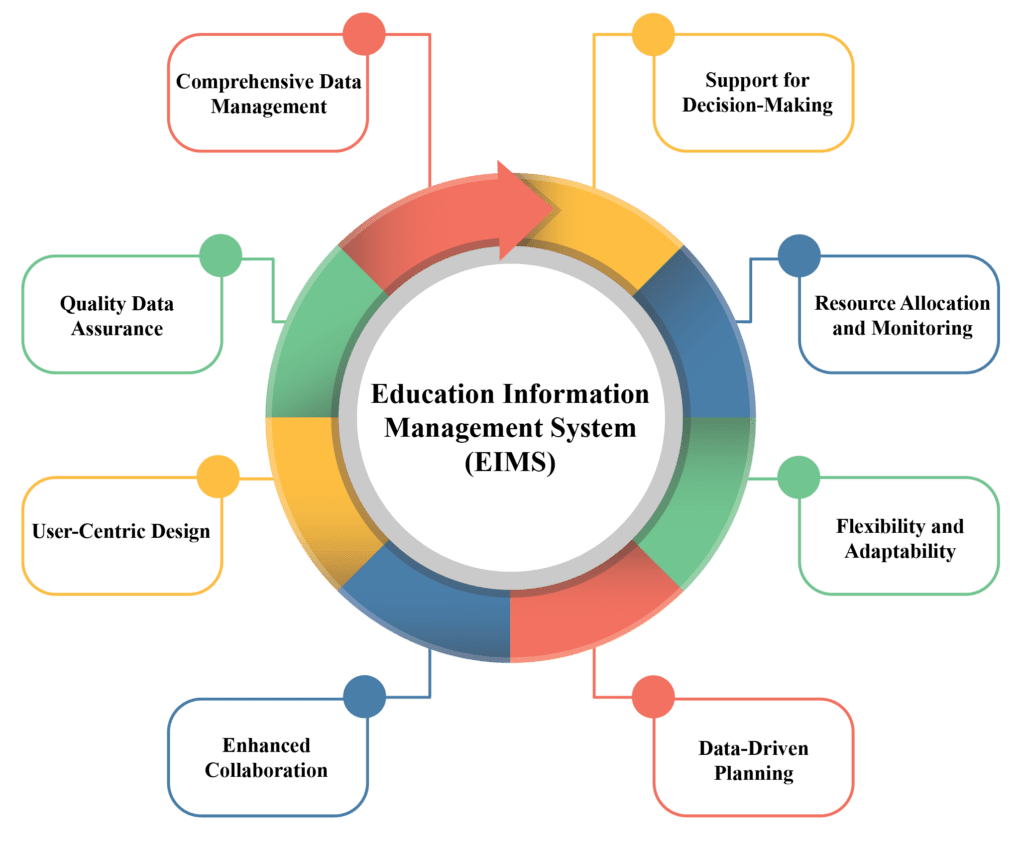Education Information Management System (EIMS): A Step towards Improving the Quality of Education
Education Information Management System is a system for the dissemination, maintenance, processing, integration, and collection of information/data that provides management, monitoring, planning, formulation, policy analysis, and decision-making support at all levels of the education system. Education Information Management System manages the allocation and distribution of educational resources and also monitors the educational programs offered by the institution. It is a system of rules, regulations, procedures, processes, methods, models, technology, and people that operates collectively to provide timely, unambiguous, reliable, and comprehensive support to education managers, decision-makers, and leaders. In short, Education Information Management System plays a distinctive role in assisting educational institutions in their growth. Ease of tracking and analyzing resource distribution and expenditures are some of the key reasons behind the implementation of the Education Information Management System system. The effective development of Education Information Management System is complex and challenging, as most institutions are primarily focused on the provision of education, making it difficult to coordinate data collection and establish common data requirements.
With the continuous rise in the world population, a marked increase in educational requirements at all levels is also observed. Major efforts have been directed toward enhancing educational relevance, quality, and opportunities. Both private and public sectors have undertaken remarkable steps in an attempt to provide universal education at multiple levels. Nowadays, comprehensive education management solutions are being implemented by several prominent educational institutions to enhance the student experience and align academic processes. A prominent challenge in educational institutions in Asian countries is generally related to the management of quality data. The quality of data and information in education has been a focus of concern due to numerous reported misinterpretations, inconsistencies, and inaccuracies. The fast-changing requirements of education, brought about by rapid technological advancement, have created a wide gap between what schools provide and what society demands. In short, the challenges of relevance, quality, equity, and access in education can be addressed using various methods that require a decision support system. The lack of empirical data generated through a functional and carefully designed system has resulted in the need for an Educational Information Management System (EIMS).
This is where WorkSure® plays a key role in providing an efficient and user-friendly Education Information Management System to any size, kind, and type of educational institution. The Education Information Management System developed by WorkSure® is an integrated technology framework that encompasses end-to-end educational management and associated information. It considers the requirements of all groups that rely on information (heads, staff, teachers, students, guardians, etc.), efficiently tracks information resources, and guides appropriate decision-making. It serves as a repository for reporting, analyzing, processing, and collecting educational data/information. It can completely change the educational management process in the areas of planning, responsibility, communication, human resource management, workload decision-making, and leadership.
Objectives of Our Team for Providing Education Information Management System to an Educational Institution:
- Describe the different concepts, structure, and development of an Education Information Management System
- Rationalize the need and importance of establishing an Education Information Management System
- Describe the major features of an EIMS in terms of objectives, integration, dimensions, institutional framework, center’s and specialization, and informational flow
- Discuss the concept, derivation, application, and computation of performance indicators
- Provide a flexible interface for ease of information distribution
- Discuss the concept and development process of planning for education for all
- Elaborate on the essentials of formulating an education for all action plan
